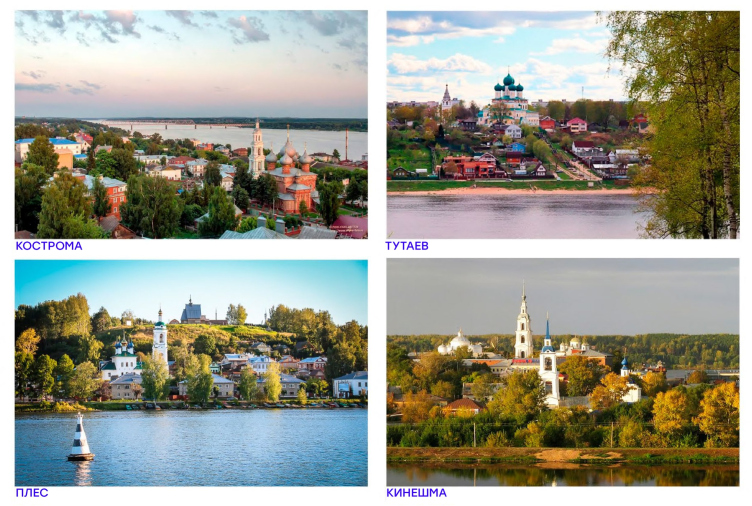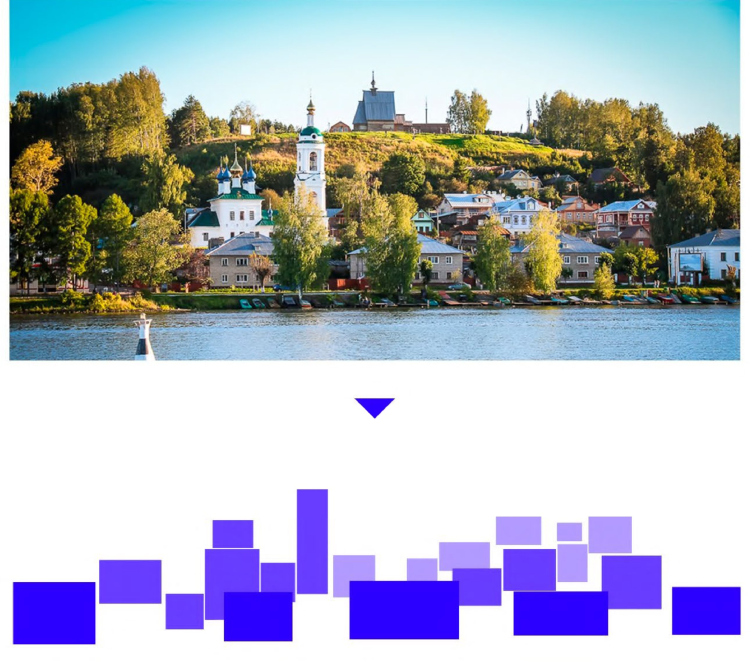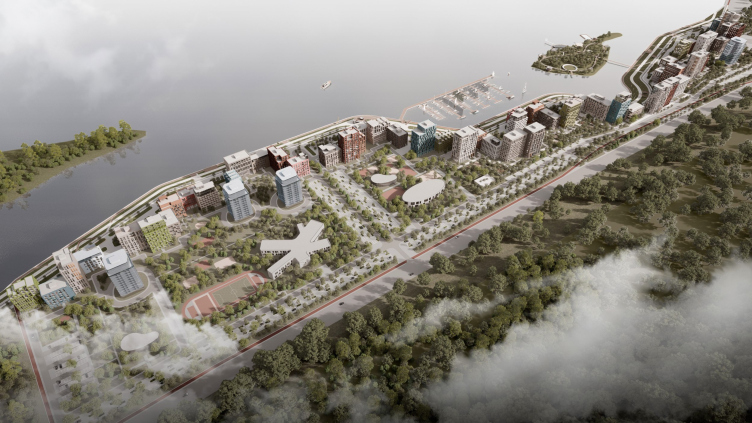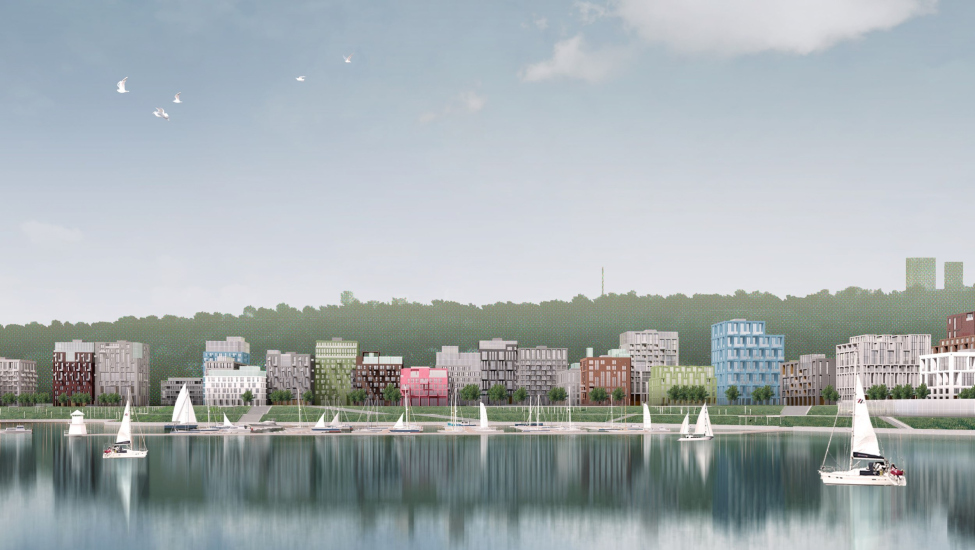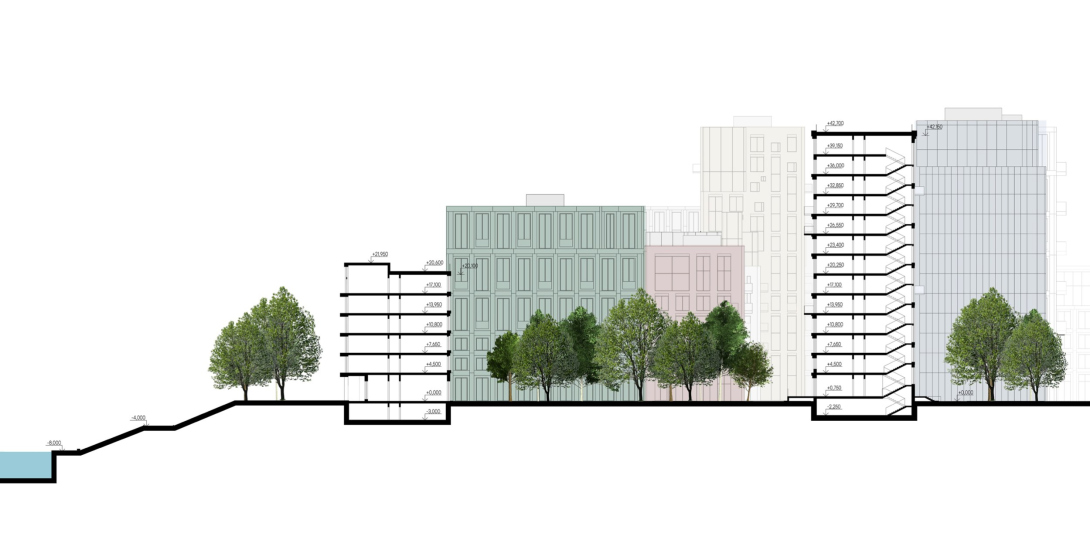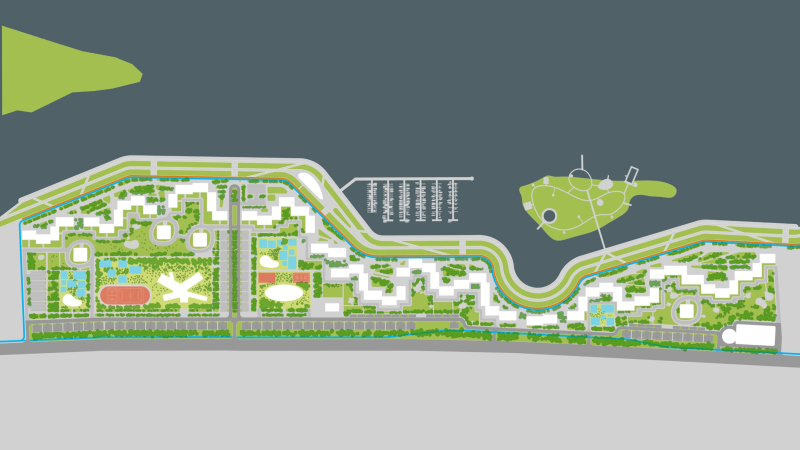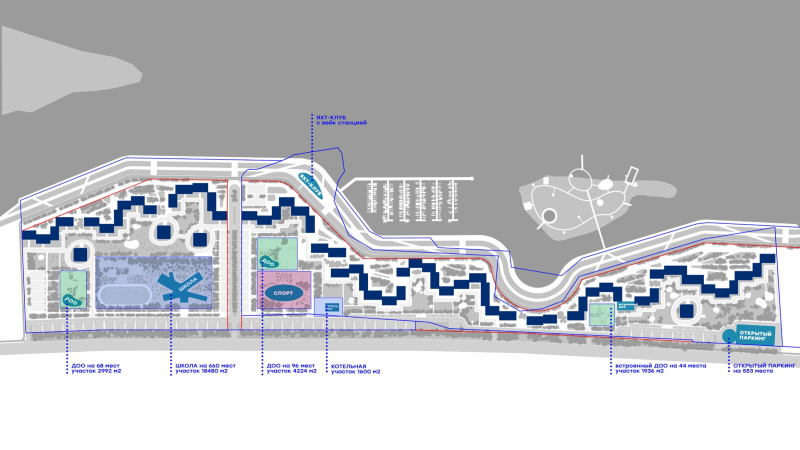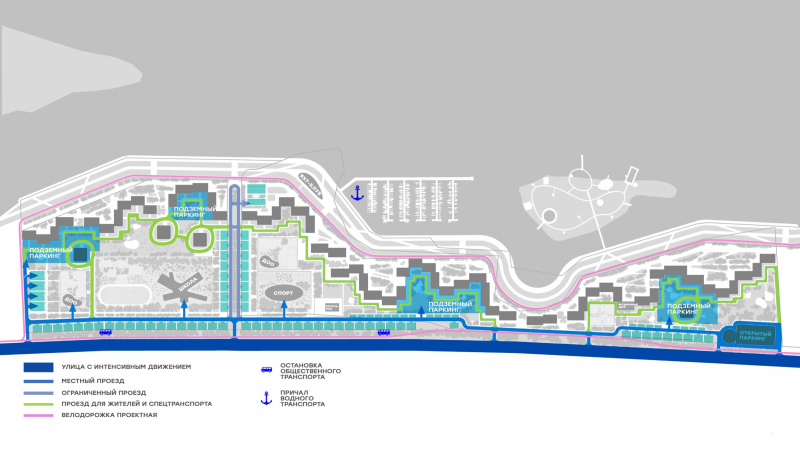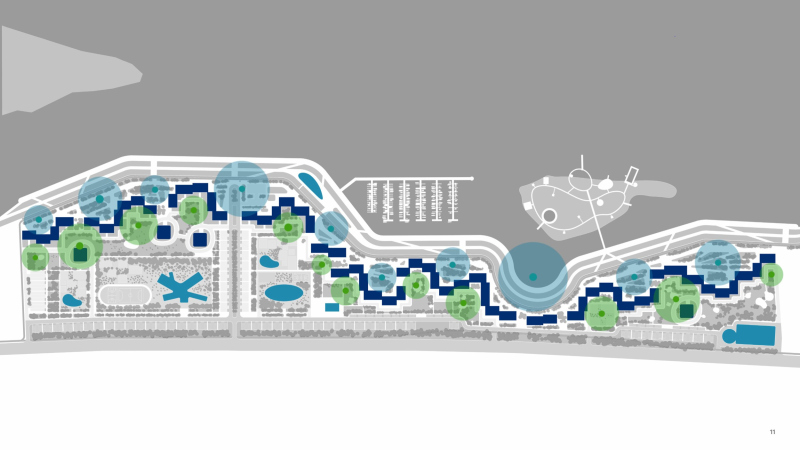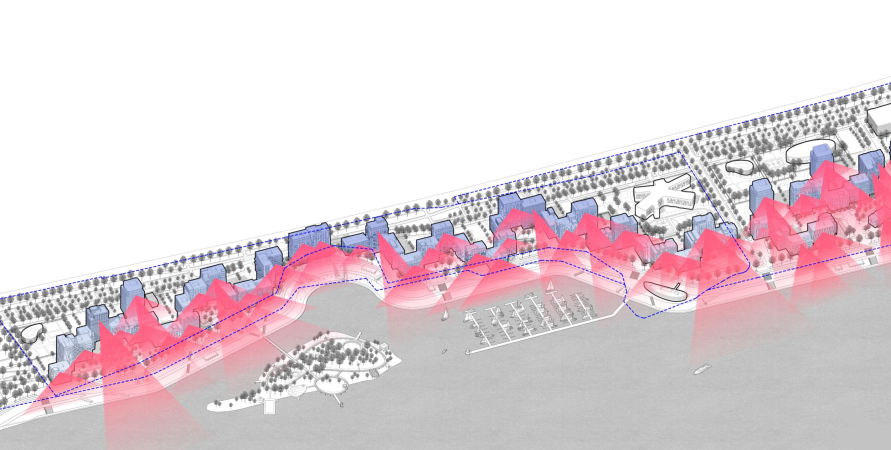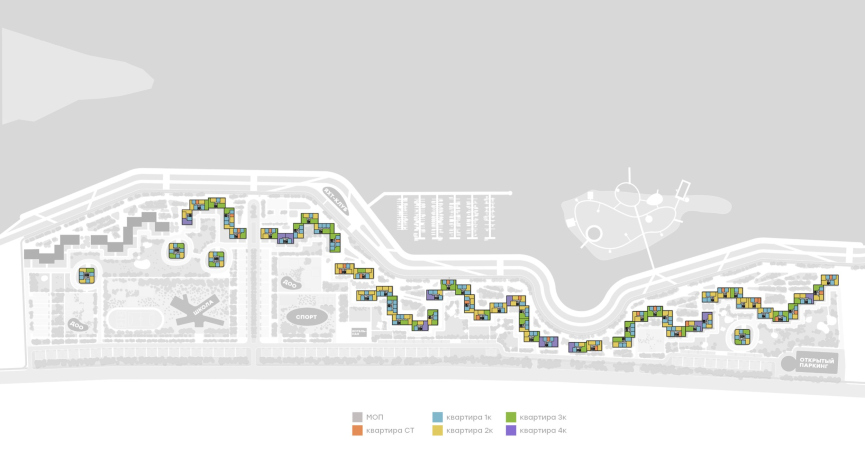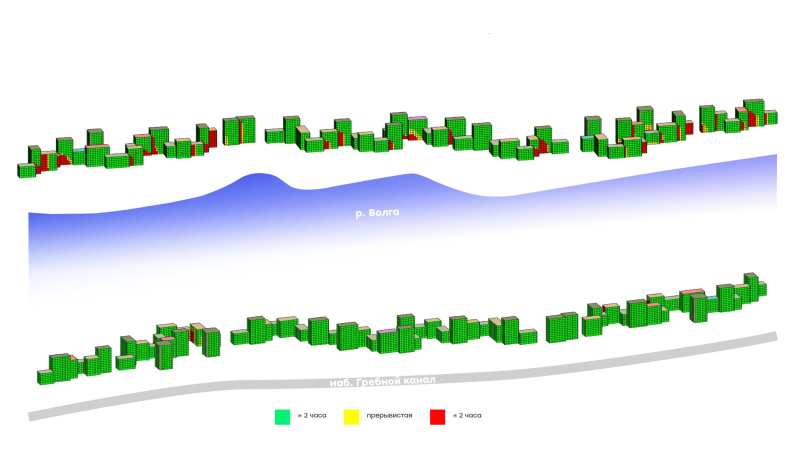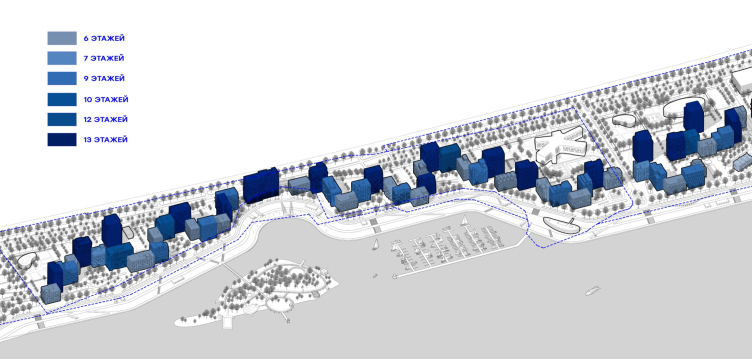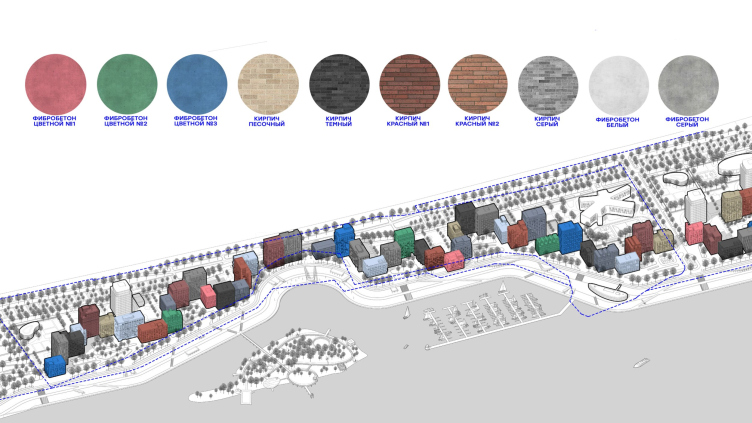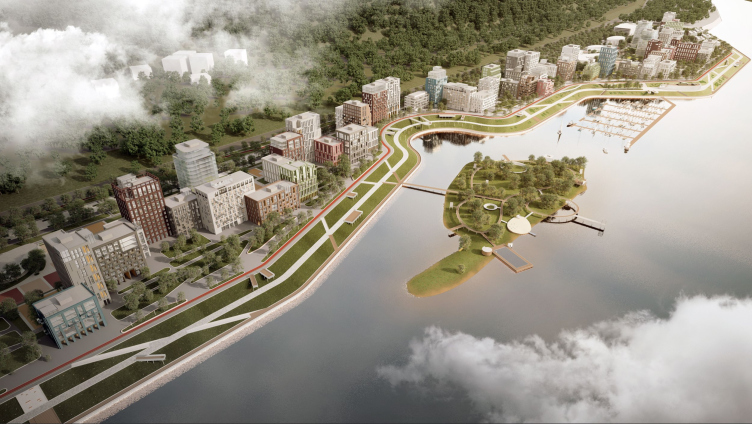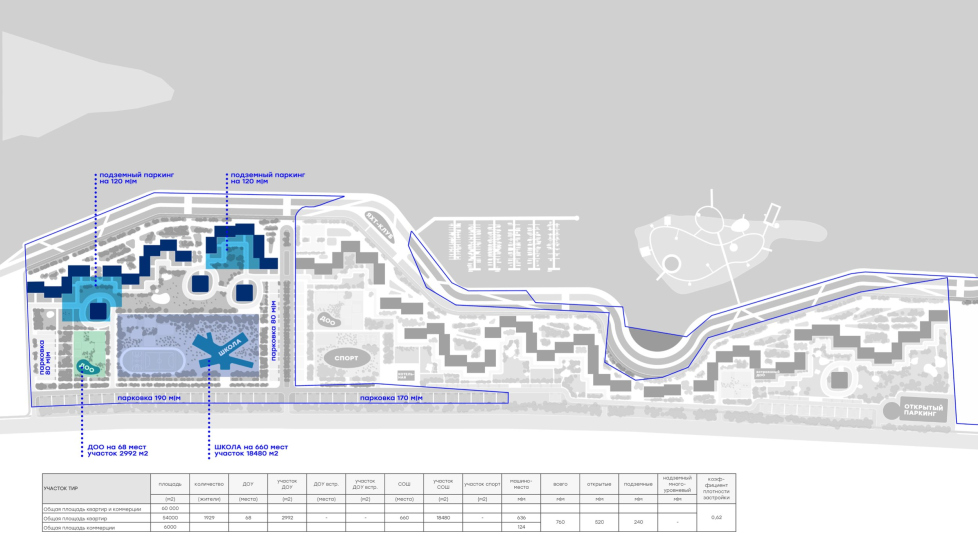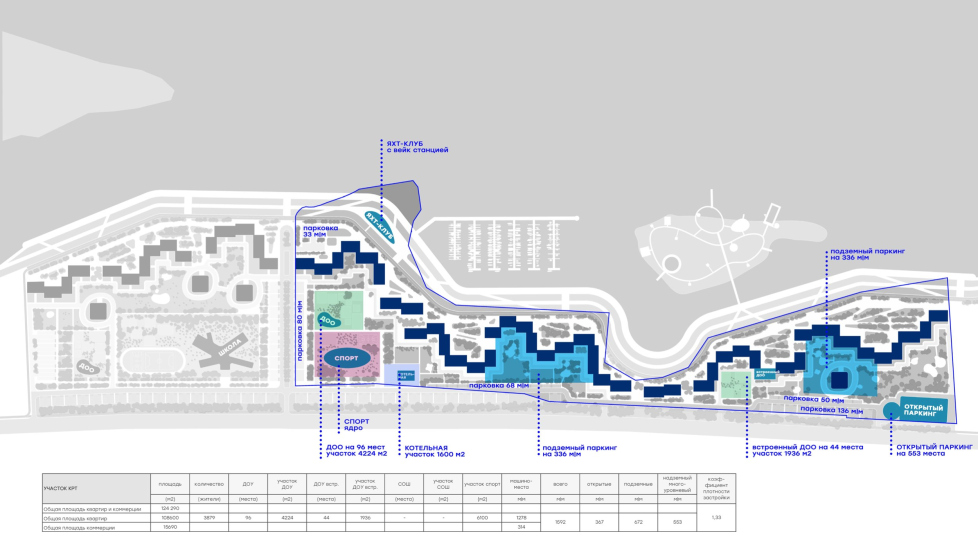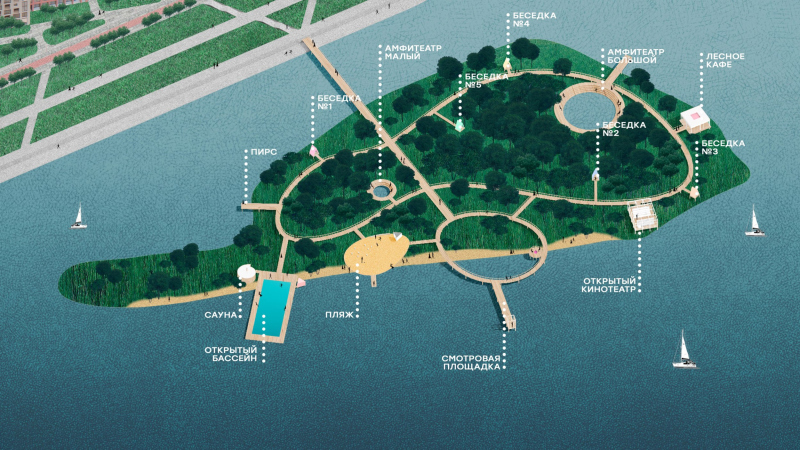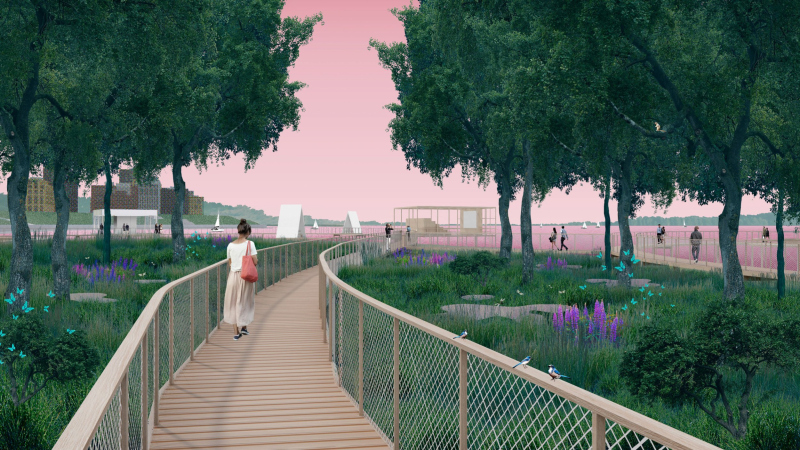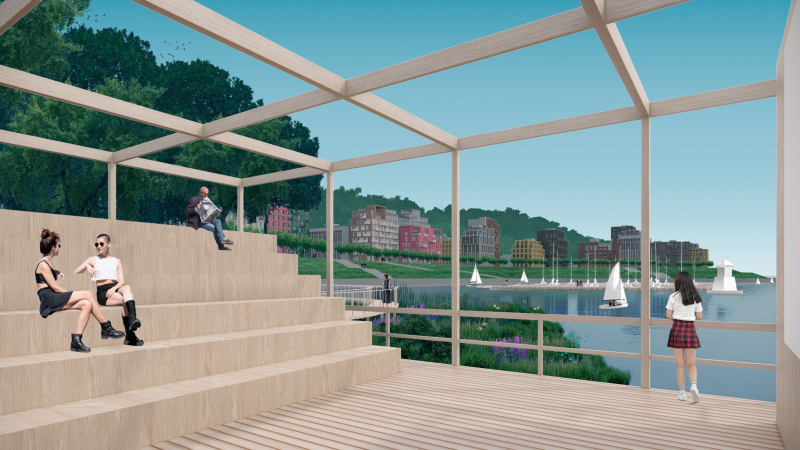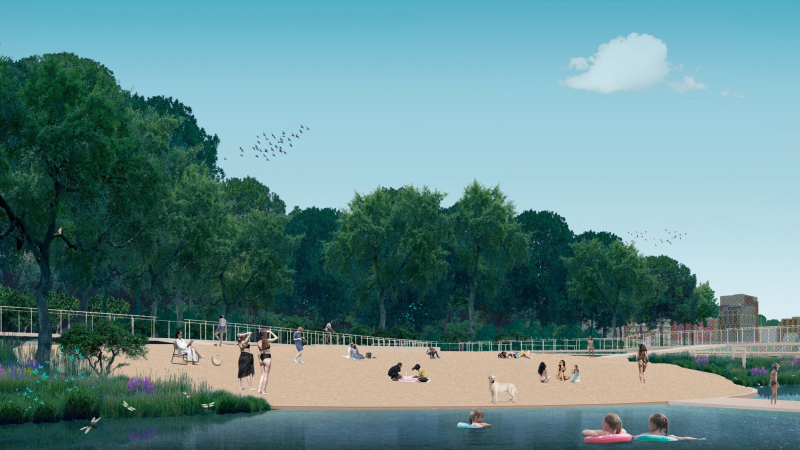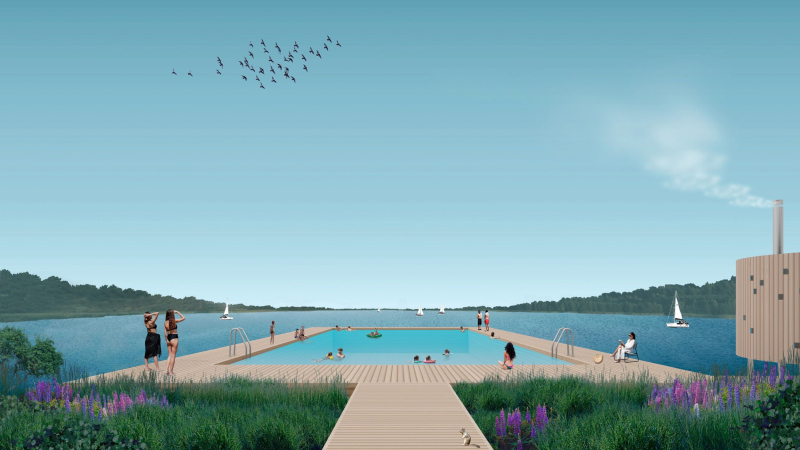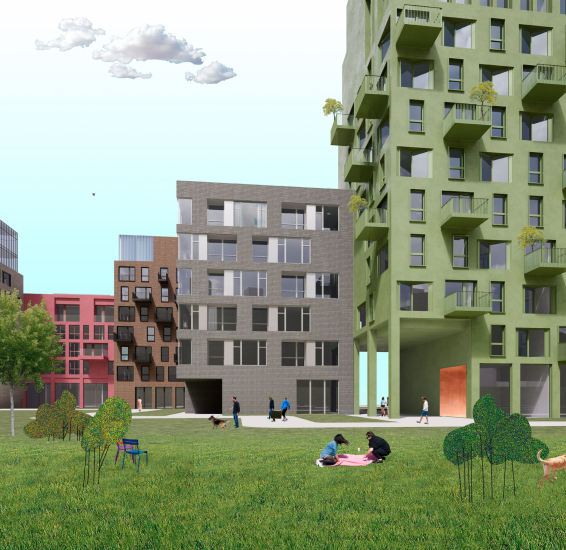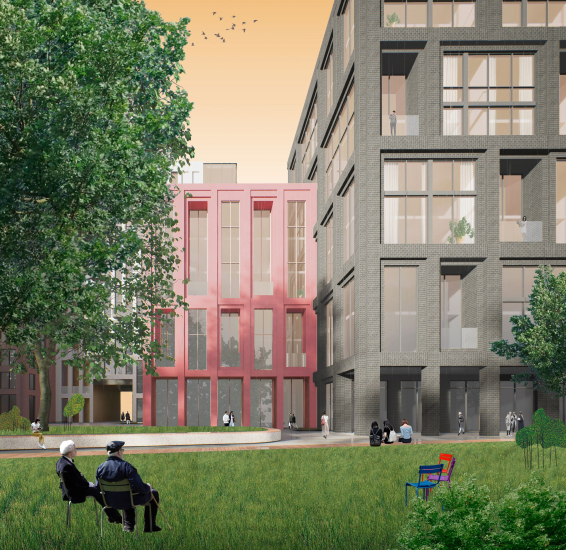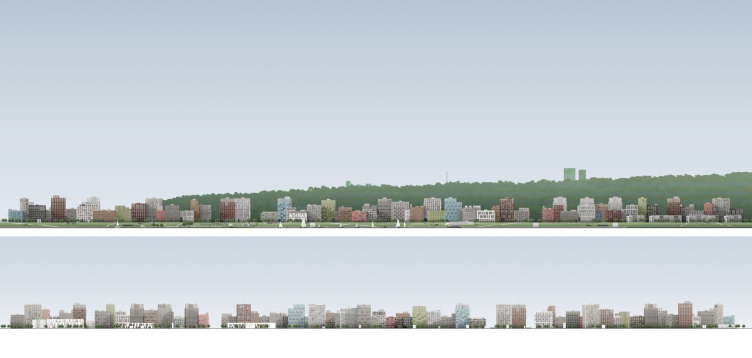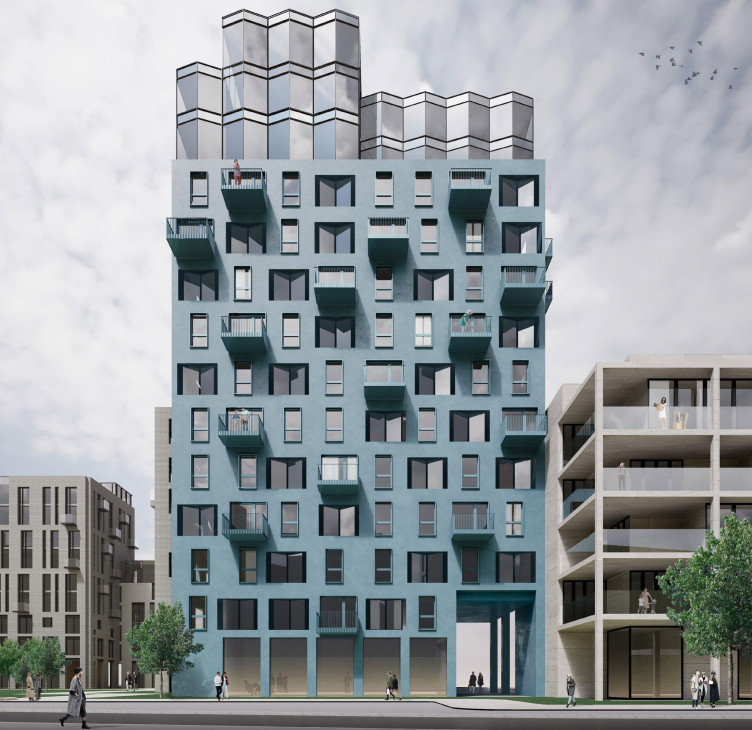The architectural concept for the integrated development of the embankment of the Rowing Canal in Nizhny Novgorod.
Copyright: © Studio 44
The architectural concept for the integrated development of the embankment of the Rowing Canal in Nizhny Novgorod. The skyline
Copyright: © Studio 44
When we began designing, we asked ourselves: what should a residential district on the Volga look like? We can probably imagine how to build along the Neva, but does that approach suit an extended stretch of riverbank in the central part of the country? In our view, applying a block structure and designing in rigid grids everywhere is a mistake. It’s essential to find a solution that reflects the character of the place.
A brief analysis led us to conclude that there is always a silhouette that follows nature, the shape of the riverbed, and the landscape. There is always a multi-layered composition created by buildings situated at different levels. So, we tried to draw a long, silhouette-like line “assembled” from individual buildings. Its curves follow the picturesque shoreline, forming public squares open towards the embankment and enclosed courtyard spaces.
A brief analysis led us to conclude that there is always a silhouette that follows nature, the shape of the riverbed, and the landscape. There is always a multi-layered composition created by buildings situated at different levels. So, we tried to draw a long, silhouette-like line “assembled” from individual buildings. Its curves follow the picturesque shoreline, forming public squares open towards the embankment and enclosed courtyard spaces.
The architectural concept for the integrated development of the embankment of the Rowing Canal in Nizhny Novgorod
Copyright: © Studio 44
The bank on the side of the Rowing Channel gains height gradually, starting from a relatively flat step where the residential complex will be located. Thus, its buildings, rising up to 13 stories, will not block the view of the low-rise houses located further up the slope but will instead create the base of the “mountain”. The architects set out to make this base a natural and picturesque continuation of the landscape.
The master plan solution differs significantly not only from the blocks designed by GORA and ASADOV Architects, but also appears to have no direct analogs at all.
The architects arranged the buildings to resemble a isoline following the terrain – resulting in a “pixelated” wave-like ribbon that stretches along the embankment. The second key aspect is that the residential development is brought as close to the water as possible. As a result, nearly all buildings, except for four freestanding towers, are situated on the “first line”. This doesn’t guarantee that 100% of the apartments will have direct views of the Volga, but the percentage approaches the maximum possible.
Another feature follows from these specifics: the line of buildings serves as a kind of boundary, with the embankment and its vibrant public life on one side, and quiet courtyards with park-like features and a more relaxed rhythm on the other. Permeability is achieved through streets, arches, and commercial spaces with dual orientations.
The school, kindergartens, and sports center are clustered near the main traffic artery. A service road improves their accessibility and reduces traffic within the residential area, while a wide promenade shields the area from noise and air pollution.
The “isoline” design is not radically different from conventional blocks. Essentially, it’s their “unfolding” or “development drawing”: each segment of the “ribbon”, composed of sections with varying heights and façades, could theoretically be “folded” into a traditional urban block. The height variations, sectional offsets, and a combination of colors, plasticity, and contrasting materials help avoid the feeling of a monotonous wall. This is one of the company’s signature techniques – parceling large-scale residential development into dimensions comfortable for perception. It was even expected that at later stages of project development the parcels could be divided into lots and assigned to different architectural firms.
The architectural concept for the integrated development of the embankment of the Rowing Canal in Nizhny Novgorod
Copyright: © Studio 44
The architectural concept for the integrated development of the embankment of the Rowing Canal in Nizhny Novgorod. The facade materials
Copyright: © Studio 44
The architectural concept for the integrated development of the embankment of the Rowing Canal in Nizhny Novgorod
Copyright: © Studio 44
Additional information not mentioned in previous texts about competition entries: part of the future neighborhood falls under the “Intensive Development Zone”, while another part is designated for “Integrated Territorial Development”. On Studio 44’s master plan, their boundary coincides with a wide boulevard between the “radial” school and kindergarten.
As previously mentioned, the “isoline” creates two “oppositions” – river-facing and courtyard-facing. Thanks to the wave-like layout, the embankment area expands with courtyards forming plazas and piazzettas. Commercial spaces on the ground floors – shops, cafes, and restaurants with outdoor seating – lend the area a slightly resort-like atmosphere and promote an active lifestyle, transforming the upper level of the embankment into the main public space of the district. A bike path is also laid along the upper level.
The middle and lower parts of the embankment are less crowded with structures, serving primarily as promenades with viewing platforms and descents to the water. This design seems to create space for slower, more tranquil contemplation. The natural curves of the shoreline and variations in the terrain provide numerous perspectives from which the development reveals itself anew.
The anchor feature of the project is a yacht center with docks and a wakeboarding station – a sport that adds variety to the winter use of the riverside boulevard. In winter, the natural terrain is also proposed as sledding hills, and the frozen Volga expands the area for walking or classic skiing.
The island near the shore is more densely developed relative to the embankment: it features a beach, an outdoor pool with a sauna, cafes, amphitheaters arranged around a pond, gazebos, and cafes. Since the island is flooded in spring, the paths and pavilions are raised on stilts.
The spaces on the other side of the “isoline” are more oriented toward the green hill rising beyond the road rather than the river, which can be glimpsed here and there through arches and street vistas. Different scenarios unfold here, as people don’t always seek wind and open space. The closer to the highway, the more “urban” the landscape becomes. The transitional link is provided by four standalone towers clad in glass.
The original master plan not only highlights the identity of the location but also realizes the potential inherent in the site’s size, preserving extensive areas for greenery and recreation. It’s worth noting that this solution is quite bold and risky – at this density, one must work virtuously with massing to avoid feelings of crowding and clutter, and instead evoke interest and invite the eye to linger, following the complex building line.
The architectural concept for the integrated development of the embankment of the Rowing Canal in Nizhny Novgorod
Copyright: © Studio 44
The architectural concept for the integrated development of the embankment of the Rowing Canal in Nizhny Novgorod. The riverside boulevard
Copyright: © Studio 44




